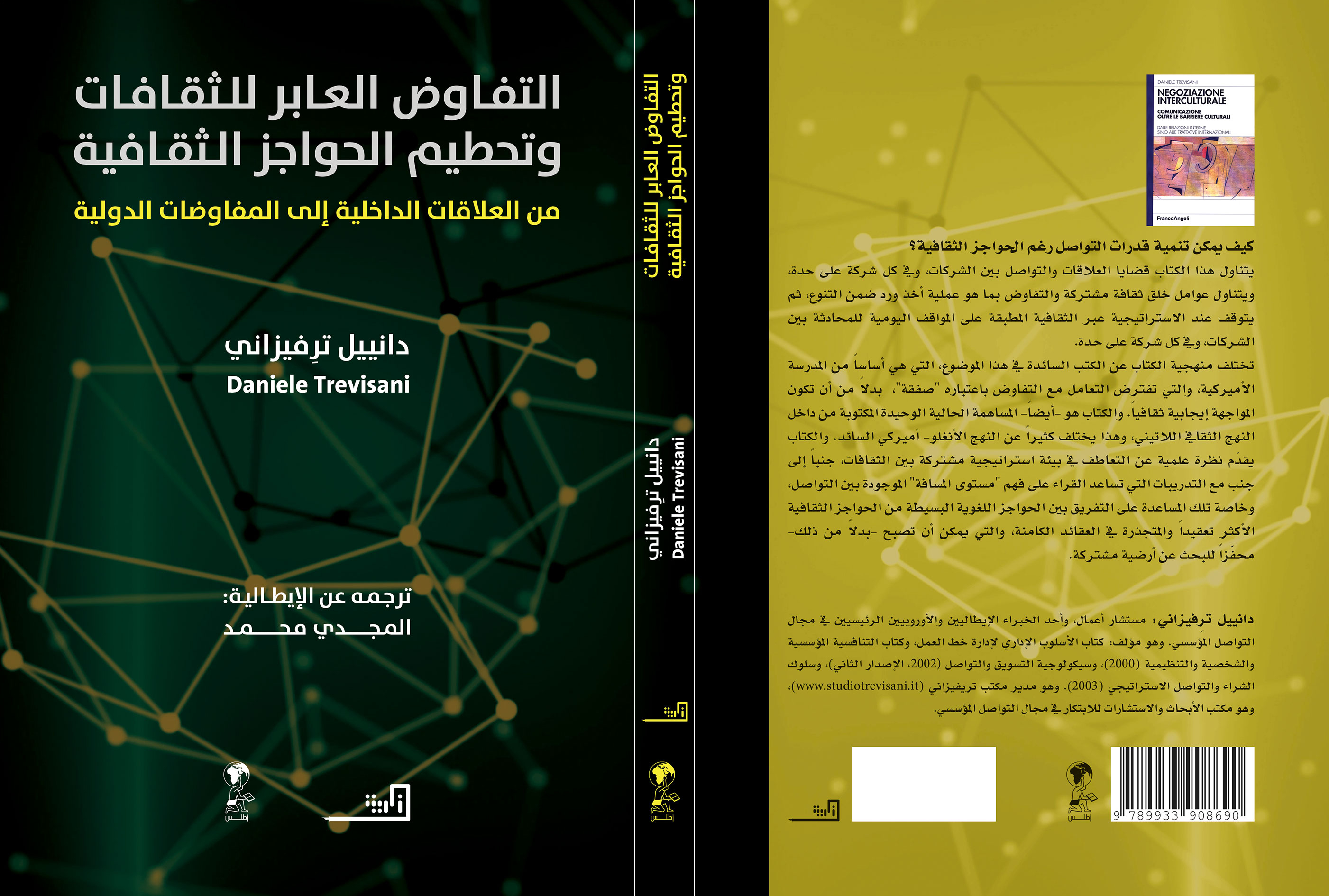© Article translated from the book “Negoziazione interculturale, comunicazione oltre le barriere culturali” (Intercultural Negotiation: Communication Beyond Cultural Barriers) copyright Dr. Daniele Trevisani Intercultural Negotiation Training and Coaching, published with the author’s permission. The Book’s rights are on sale and are available for any Publisher wishing to consider it for publication in English and other languages except for Italian and Arab whose rights are already sold and published. If you are interested in publishing the book in English, or any other language, or seek Intercultural Negotiation Training, Coaching, Mentoring and Consulting, please feel free to contact the author from the webstite www.danieletrevisani.com
The result of the lack of proper negotiator training is failure
As Zorzi (1996) points out, communication requires conversational cooperation and work on the negotiation of meanings: “Analyzing intercultural encounters, we have seen how the interaction between people from different cultures is marked by a series of moments of asynchrony, which manifest themselves in silences, overlaps, unexpected reactions, interruptions, etc. which show the difficulty of establishing and maintaining conversational cooperation due to differences in cultural background and communication conventions.
Participants, normally unaware of both socio-cultural knowledge and the communicative conventions that contribute to their interpretation (and, normally, also unaware of their own conversational conventions), have only the perception of a failed encounter, the causes of which are rarely identified. They explain what happened more often in psychological terms than in sociological or cultural terms, perceiving the other person as uncooperative, aggressive, stupid, incompetent or with unpleasant personal characteristics. Repeated unsuccessful intercultural encounters with different people over time lead to the formation of negative cultural stereotypes (Chick, 1990: 253 et seq).
Zorzi reports this excerpt of real dialogue taken from Blommaert: A is the Belgian, B is the African. They are in Brussels on a winter afternoon.)
A: Do you want a coffee?
B: No, thanks, I’m not hungry.
A: Do you want a COFFEE?
B: No, thanks. (short pause) I’m not hungry. (long pause)
A: Would you like to go for a drink? B: Sure, with pleasure, it’s really cold. A: Maybe a coffee?
B: Well, gladly.
As Zorzi points out, there are strong cultural and strategic implications at the base of this excerpt of communication difficulties: B reacts to the initial question as if he had been offered food, as in his culture (Haya, in northern Tanzania) guests are offered coffee beans to chew as a symbol of friendship, hospitality and wealth. Consequently, B’s categorization of coffee as “food” is entirely consistent.
The categorization of the Belgian, on the other hand, is “hot drink”. The first two bars of the dialogue highlight the difference between the two conceptions, which leads to a pragmalinguistic misunderstanding … Three phases can be identified in this exchange: a first of “observation” of what is happening, in which the participants become aware of the failure of communication: their contributions are perfectly consistent with their cultural assumptions, but do not work in that situation ; a second phase follows, the ‘search for a common ground‘ in which A avoids the problematic element (coffee).
Both then agree on ‘have a drink’. At this point the ‘dialogue’ phase begins: the idea of going for something hot is explicitly appreciated and a common basis has been created to accept the idea of coffee as a drink. This example shows how intercultural competence consists in achieving mutual adaptation (and not just the adaptation of the learner to the linguistic and cultural models of the host country). The primary objective of intercultural pedagogy – consequently – is to find teaching strategies so that subjects of different cultural origins can learn to communicate with each other regardless of differences in language, cultural behavior and beliefs.
The focus therefore shifts from the work that the single learner does to the way in which two people from different cultures manage to negotiate meanings and relationships through a linguistic medium in which they have very unbalanced skills. There is therefore a linguistic common ground that allows negotiators to get out of the impasse of the lack of a shared vocabulary. Trying to share the meaning of the terms, to get out of “semantic indeterminacy”, “semantic confusion”, “connotative shadows” is one of the main tools of the intercultural negotiator.


© Article translated from the book “Negoziazione interculturale, comunicazione oltre le barriere culturali” (Intercultural Negotiation: Communication Beyond Cultural Barriers) copyright Dr. Daniele Trevisani Intercultural Negotiation Training and Coaching, published with the author’s permission. The Book’s rights are on sale and are available for any Publisher wishing to consider it for publication in English and other languages except for Italian and Arab whose rights are already sold and published. If you are interested in publishing the book in English, or any other language, or seek Intercultural Negotiation Training, Coaching, Mentoring and Consulting, please feel free to contact the author from the webstite www.danieletrevisani.com
For further information see:
- Website of Studio Trevisani Academy For Business Training, Coaching e Mentoring, in Italian
- Website Dr. Daniele Trevisani in Italian
- Dr. Daniele Trevisani – Website in English
- Comunicazioneaziendale.it Italian website on Business Communication
- Medialab Research Cultural Association for Communication Research
- Dr. Daniele Trevisani Linkedin Profile in English
- Facebook Channel
- YouTube Channel


